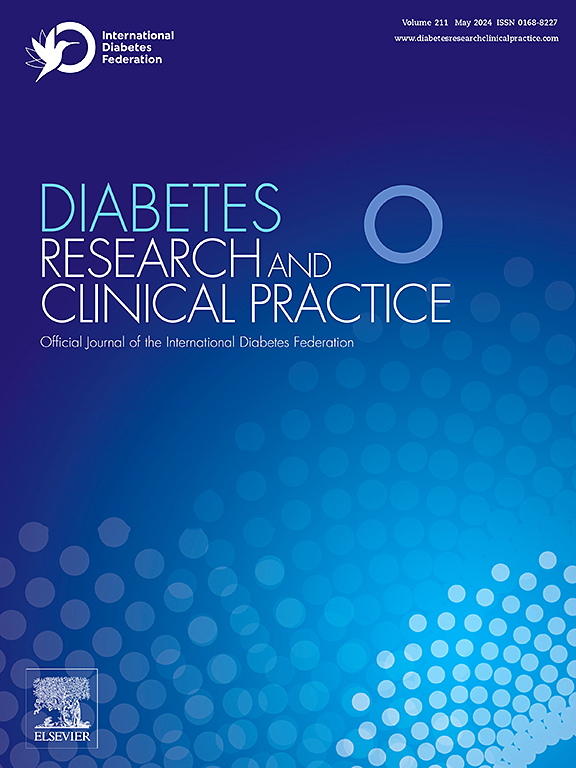Comparison of the association between COVID-19 and new onset diabetes in a regional and national dataset
IF 6.1
3区 医学
Q1 ENDOCRINOLOGY & METABOLISM
引用次数: 0
Abstract
Aims
This study examined new onset diabetes following COVID-19 infection in large datasets.
Methods
A retrospective cohort study design was used in three distinct databases: data from a large academic medical center (University of Kentucky Healthcare, UKHC), claims data from privately insured patients in the Merative MarketScan (MarketScan) database, and a subset of the MarketScan database with lab tests. Control groups included patients from the prepandemic timeframe (prepandemic cohort), as well as COVID-era patients without documented COVID infection (COVID − cohort).
Results
Incident diabetes in COVID infected patients was higher in all datasets. In the UKHC and MarketScan datasets, the adjusted Hazard ratios (HR) were 3.46 and 2.13 in UKHC and MarketScan. Incident diabetes was elevated even in patients who were treated in the outpatient setting and much higher in patients who were treated in the inpatient setting, especially those who required inpatient interventions. In MarketScan, the HR for developing type 1 diabetes was 1.61.
Conclusions
Persons infected with COVID-19 during the initial 18 months of the pandemic demonstrated a higher incidence of new onset diabetes, which was evident in all populations. Diabetes incidence was especially high in an academic center population with higher health disparities, and in patients with a more severe infection with the virus.
在区域和国家数据集中比较COVID-19与新发糖尿病之间的关系
目的:本研究在大型数据集中检查COVID-19感染后新发糖尿病。方法在三个不同的数据库中采用回顾性队列研究设计:来自大型学术医疗中心(肯塔基大学医疗保健中心,UKHC)的数据,Merative MarketScan (MarketScan)数据库中来自私人保险患者的索赔数据,以及MarketScan数据库中包含实验室测试的子集。对照组包括来自大流行前时间段的患者(大流行前队列),以及未记录COVID感染的COVID时代患者(COVID -队列)。结果在所有数据集中,COVID感染患者的糖尿病发生率均较高。在UKHC和MarketScan数据集中,UKHC和MarketScan调整后的风险比(HR)分别为3.46和2.13。即使在门诊接受治疗的患者中,糖尿病发病率也有所上升,而在住院接受治疗的患者中,尤其是那些需要住院干预的患者,糖尿病发病率要高得多。在MarketScan中,患1型糖尿病的HR为1.61。结论在大流行的最初18个月感染COVID-19的人群中,新发糖尿病的发病率较高,这在所有人群中都很明显。在健康差距较大的学术中心人群中,糖尿病发病率尤其高,患者感染病毒的程度也更严重。
本文章由计算机程序翻译,如有差异,请以英文原文为准。
求助全文
约1分钟内获得全文
求助全文
来源期刊

Diabetes research and clinical practice
医学-内分泌学与代谢
CiteScore
10.30
自引率
3.90%
发文量
862
审稿时长
32 days
期刊介绍:
Diabetes Research and Clinical Practice is an international journal for health-care providers and clinically oriented researchers that publishes high-quality original research articles and expert reviews in diabetes and related areas. The role of the journal is to provide a venue for dissemination of knowledge and discussion of topics related to diabetes clinical research and patient care. Topics of focus include translational science, genetics, immunology, nutrition, psychosocial research, epidemiology, prevention, socio-economic research, complications, new treatments, technologies and therapy.
 求助内容:
求助内容: 应助结果提醒方式:
应助结果提醒方式:


